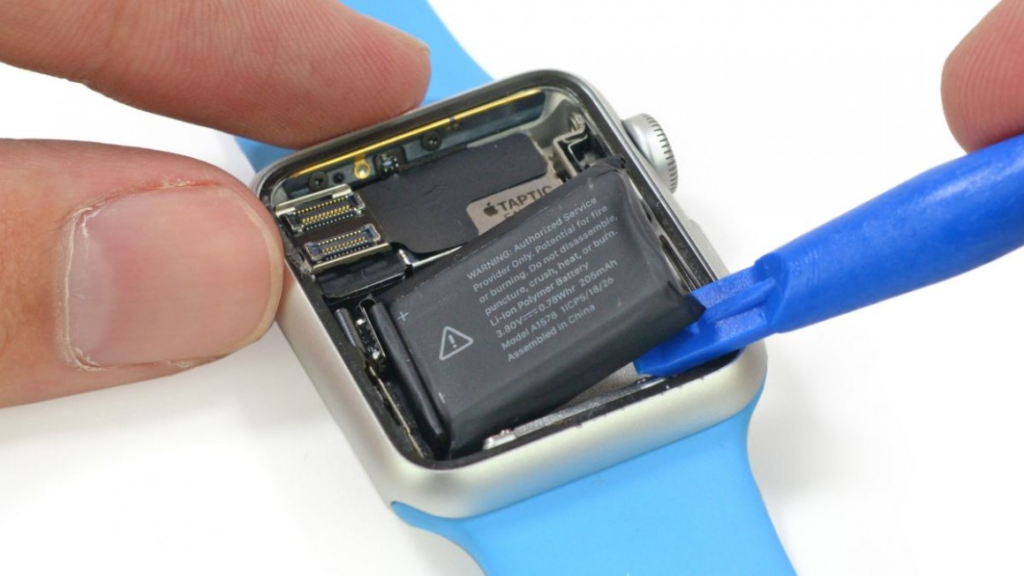Smartwatches are fast becoming a staple in our tech-savvy world. Each one is a complex device, operating through the day, bringing a world of information to our wrists. But what keeps them going? It’s the unsung hero of the tech world – the battery.
You will learn about the different types of batteries used to power your smartwatches in this post, along with their advantages, disadvantages, and everything in between.
1. Lithium-ion Batteries: Power Packed Performers
The real star in the smartwatch stage, lithium-ion batteries are omnipresent in modern electronics. These powerhouses owe their popularity to a few key features:
- High energy density: These batteries pack a punch. They store a large amount of energy in a tiny package, which is essential for devices as compact as smartwatches.
- Low self-discharge rate: When you’re not using your smartwatch, the battery charge trickles away slowly. This means your smartwatch is always ready for action.
Lithium-ion batteries can have some drawbacks, though. High temperatures don’t sit well with them, and they only live for about two to three years. Furthermore, excessive charging can eventually result in a reduction in capacity.
2. Lithium Polymer Batteries: The Lightweight Champs
Lithium Polymer, or LiPo batteries, are the lighter cousins of lithium-ion batteries. They’re fundamentally similar, but here’s what makes them stand out:
- Weight and adaptability: LiPo batteries are typically lighter and can mold themselves to fit into specific devices. It’s a feature that adds versatility to design-centric products like smartwatches.
Despite their advantages, LiPo batteries aren’t cheap to produce. Plus, they lose capacity over time, exactly like lithium-ion batteries. They also have a somewhat lower energy density than lithium-ion batteries.
3. Silver Oxide Batteries: The Reliable Veterans
Silver oxide batteries, while less common in smartwatches, have traditionally powered wristwatches. Here’s why:
- Energy density and voltage: Silver oxide batteries come with a high energy density and maintain a stable output voltage. These are key benefits for consistent device performance.
On the other hand, silver oxide batteries are typically not rechargeable, which makes them a less desirable alternative for gadgets like smartwatches that require frequent recharging. These batteries can also cost more than regular batteries because a significant component is silver.
4. Solar Batteries: Harnessing the Power of the Sun
Solar power isn’t a traditional type of battery, but it has found its way into the smartwatch world. Some models, like those in the Garmin Fenix series, use solar charging to bolster their primary lithium battery.
- Extended battery life: The ability to harness sunlight to charge extends battery life significantly. It’s a great feature for outdoor enthusiasts or those who love adventure-oriented watches.
However, solar charging has its limitations. It requires access to sunlight, which may not always be available, especially indoors or in cloudy regions.
5. Wireless Charging: The Future of Power
Wireless charging is an essential part of smartwatches, despite the fact that it is not a type of battery. For their lithium-ion or lithium-polymer batteries, a number of models, like the Apple Watch and Samsung Galaxy Watch, utilize special wireless charging technologies.
- Convenience and durability: Wireless charging brings the advantage of easy use and eliminates ports, reducing the risk of water or dust damage.
Final Thoughts
To sum up, smartwatch battery technology is always evolving. Manufacturers continuously strive to optimize size, weight, energy density, and lifespan. As smartwatches become increasingly sophisticated and adaptable, the call for inventive and efficient battery solutions grows louder. The future of battery technology will be shaped by this passion for invention, opening the door for revolutionary developments in the field of wearable electronics.
It’s fascinating to contemplate the power source that powers these devices if you’re a tech geek, is debating buying a smartwatch, or are just curious about the electronics on your wrist. Each battery technology, from lithium-ion to solar, has particular advantages to offer. In the end, the battery choice is a careful balancing act, based on the unique needs of each smartwatch, its features, and the lifestyle of its wearer.
As manufacturers push the limits of technology to build batteries that last longer, recharge more quickly, and are more environmentally friendly, we may anticipate seeing further advancements in this field in the years to come. The modest battery is driving the wearable technology revolution at this exciting moment.


